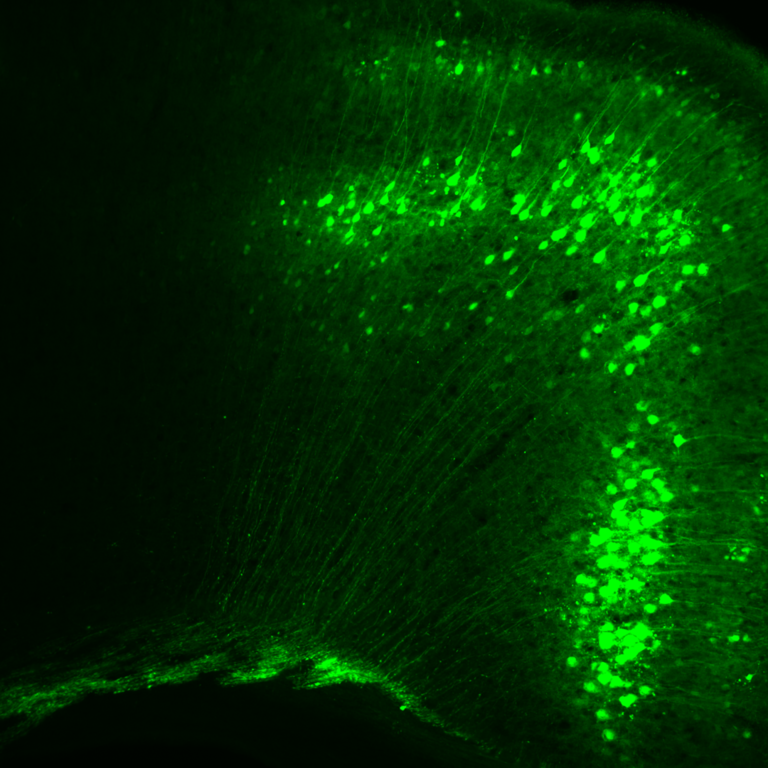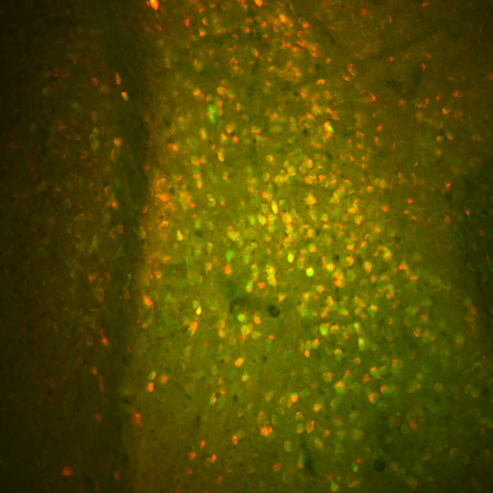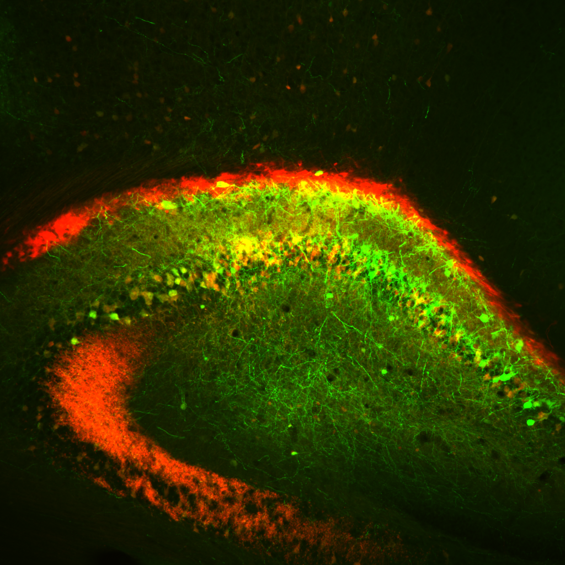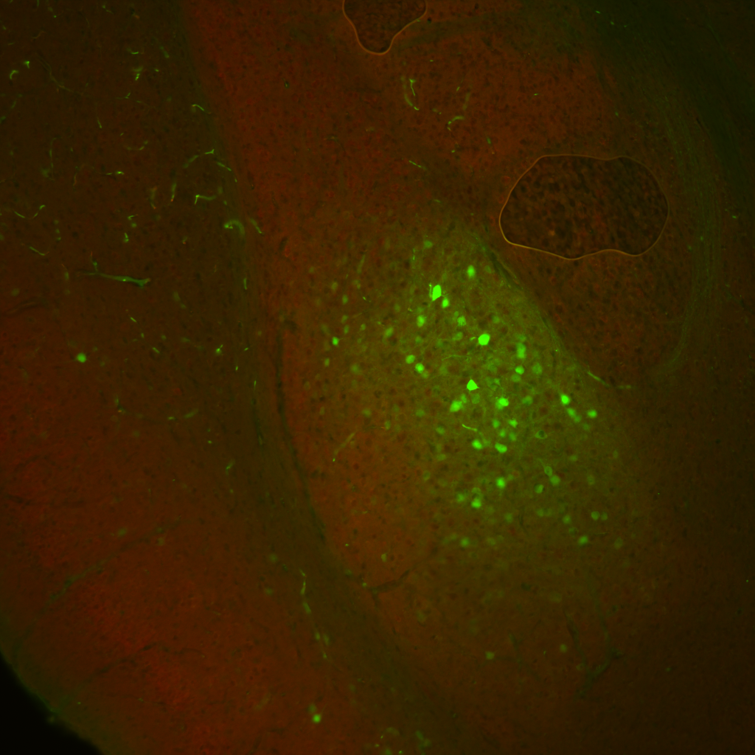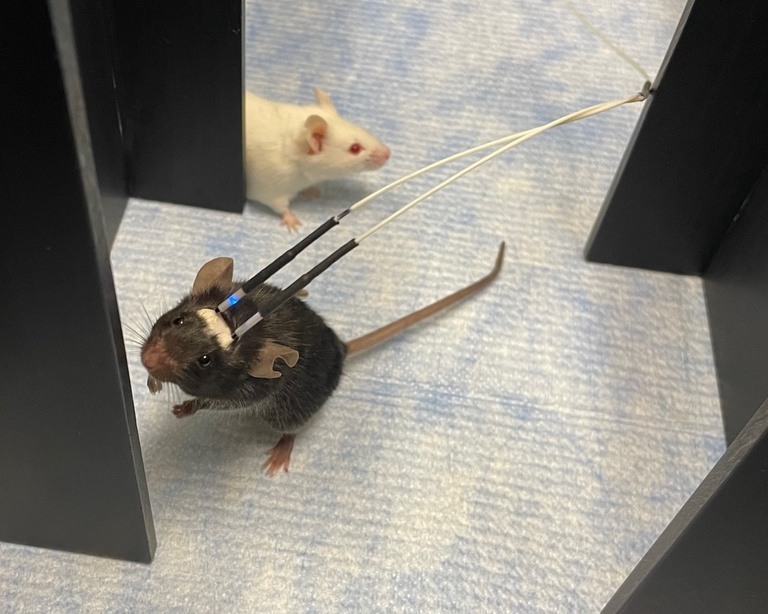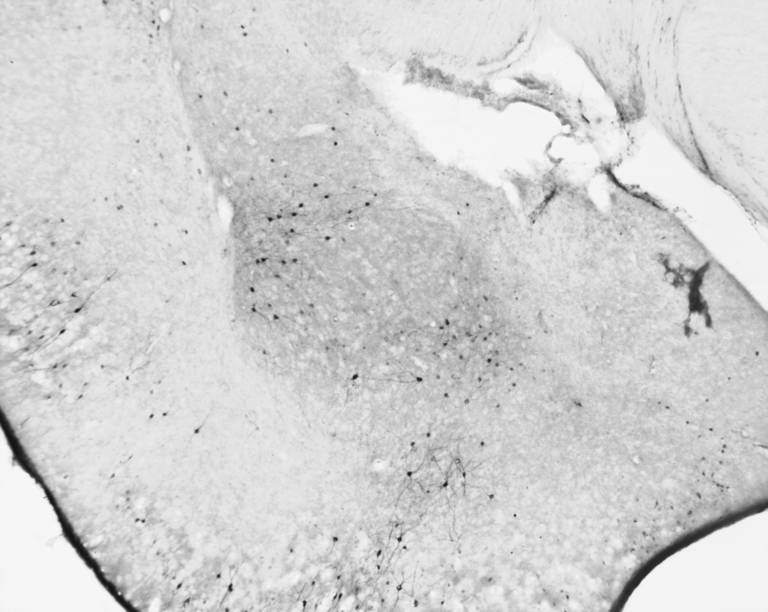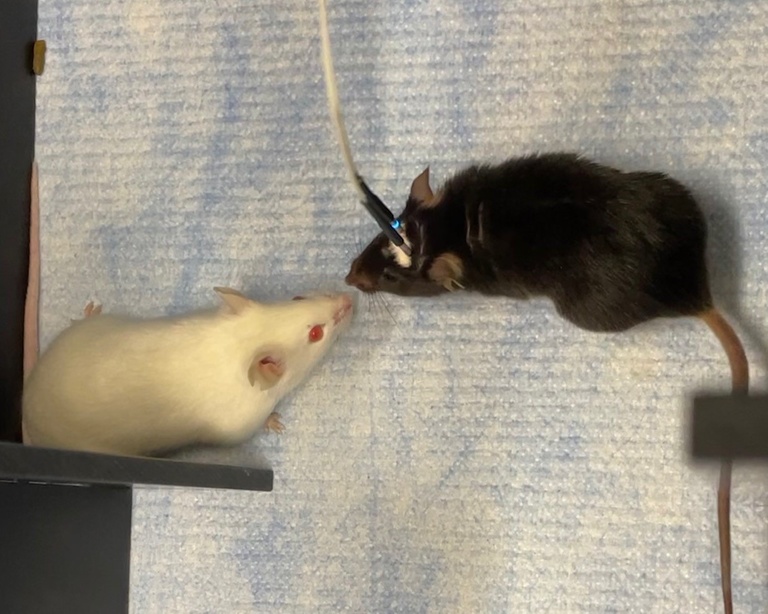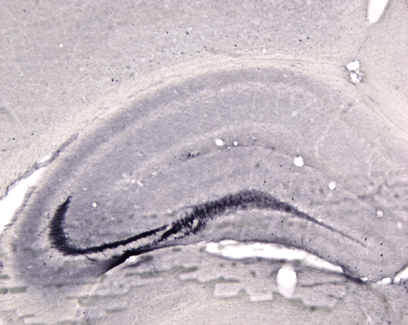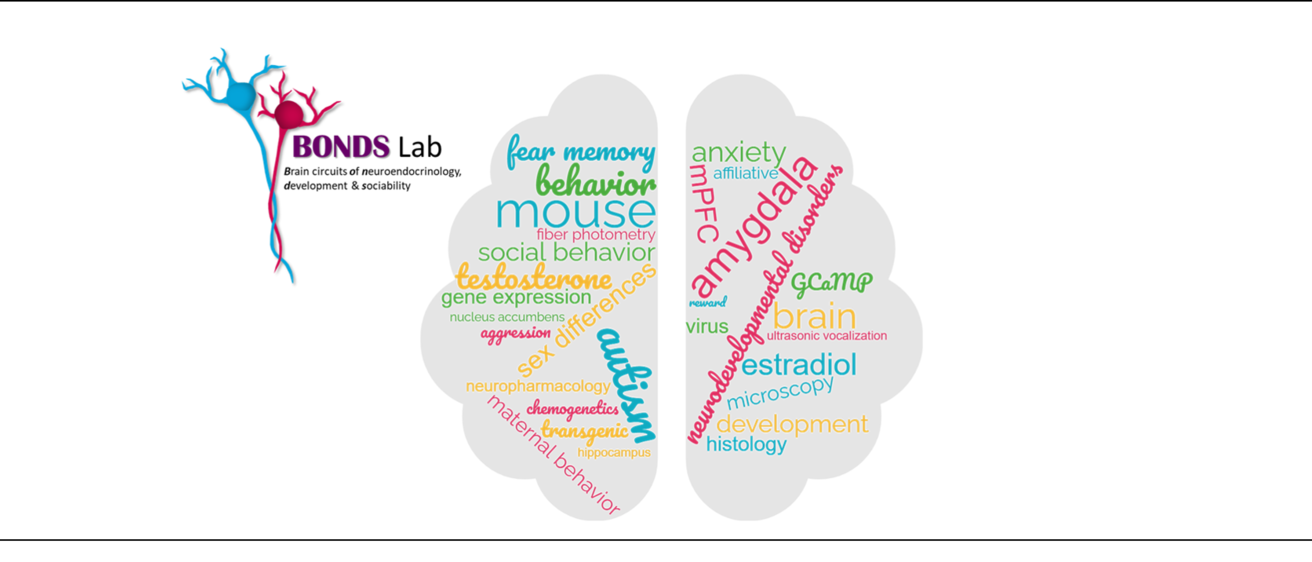
Mechanisms of Social Behavior
Nearly all species demonstrate a specific repertoire of social behaviors, many of which can be highly complex. Social behaviors can include play, aggression, mating, nest building, and parenting. Social interactions can communicate important information such as location of food sources and warnings of danger. Difficulties engaging in and interpreting such interactions can be maladaptive for many reasons, including decreased likelihood of survival or reproduction in animals, feelings of loneliness and decreased productivity in humans, and a number of other disadvantageous effects. Indeed, social impairments are a prominent symptom in many neurodevelopmental, neuropsychiatric, and neurodegenerative disorders, including Autism Spectrum Disorder, schizophrenia, and Alzheimer’s Disease. Often social deficits are among the first symptoms to manifest and more severe social impairments are associated with poorer outcomes and increased mortality. There are currently no treatments specifically targeted to treat social impairments and their pathophysiology is not well understood. Our goal is to identify brain circuits, genes, and molecular and cellular pathways that underlie social impairments to improve early detection, effective treatment, and prevention of disorders that affect social functioning. Mice are very social and serve as a useful experimental system in which to study social neural networks, which are likely highly conserved across species.
Sex Differences in Health and Disease
Neuropsychiatric disorders affect 1 in 5 Americans and can be difficult physically, psychologically, and financially. Many affect one sex more frequently, severely, or with a different progression. For example, males are more likely to be affected by neurodevelopmental disorders, but anxiety disorders disproportionately affect females. Autism Spectrum Disorder affects 4 times as many males as females, schizophrenia is observed to be more severe in males (men show earlier age at onset, have a higher propensity to negative symptoms and substance abuse, and lower social functioning), females are more than twice as likely to develop PTSD, and almost two-thirds of patients with Alzheimer’s disorder are female. In addition, some pharmacological treatments affect males and females differently, with females significantly more likely to experience adverse effects of a new medication. The mechanisms underlying these sex differences are not well understood, but identifying them could help improve diagnosis, prognosis, and treatment as we work towards precision medicine. Our experiments aim to determine the neural circuit, endocrine, and developmental processes that contribute to sex-specific vulnerability or protection in mental health disorders.
Publications
Ferri SL, Dow HC, Schoch H, Lee J, Brodkin ES, Abel T. (2021). Age- and Sex-Specific Fear Conditioning Deficits in Mice Lacking Pcdh10, an Autism Associated Gene. Neurobiology of Learning and Memory. Link
Steffen DM, Ferri SL, Marcucci CG, Blocklinger K, Molumby MJ, Abel T, Weiner JA. (2021) The γ–Protocadherins interact physically and functionally with Neuroligin-2 and negatively regulate inhibitory synapse density. Molecular Neurobiology. Link
Lynch III JF, Ferri SL, Angelakos CC, Schoch H, Nickl-Jockschat T, Gonzalez A, O’Brien WT, Abel T. (2020) Comprehensive behavioral phenotyping of the16p11.2 mouse model for neurodevelopmental disorders. Autism Research doi: 10.1002/aur.2357. Link
Soleilhavoup C, Travaglio M, Patrick K, Garção P, Boobalan E, Adolfs Y, Spriggs RV, Moles-Garcia E, Dhiraj D, Oosterveen T, Ferri SL, Abel T, Brodkin ES, Pasterkamp RJ, Brooks BP, Panman L. (2020) Nolz1 expression is required in dopaminergic axon guidance and striatal innervation. Nature Communications. 11:3111 doi: 10.1038/s41467-020-16947-6. Link
Taylor SC, Ferri SL, Grewal M, Smernoff Z, Bucan M, Weiner JA, Abel T, Brodkin ES. (2020) The role of synaptic cell adhesion molecules and associated scaffolding proteins in social affiliative behaviors. Biological Psychiatry. doi: 10.1016/j.biopsych.2020.02.012. Link
Ferri SL, Pallathra AA, Kim H, Dow HC, Raje P, McMullen M, Bilker WB, Siegel SJ, Abel T, Brodkin ES. (2020) Sociability development in mice with cell-specific deletion of the NMDA receptor NR1 subunit gene. Genes, Brain and Behavior. doi: 10.1111/gbb.12624. Link
Angelakos CC, Tudor JC, Ferri SL, Jongens TA, Abel T. Home-cage hypoactivity in mouse genetic models of autism spectrum disorder. (2019) Neurobiology of Learning and Memory, pii: S1074-7427(19)30031-0. Link
Ferri SL, Abel T, Brodkin ES. (2018) Sex differences in Autism Spectrum Disorder: A Review. Current Psychiatry Reports 20:9. Link
Schoch H, Kreibich AS, Ferri SL, White RS, Bohorquez D, Banerjee A, Port RG, Dow HC, Cordero L, Pallathra AA, Kim H, Li H, Bilker WB, Hirano S, Schultz RT, Borgmann-Winter K, Hahn CG, Feldmeyer D, Carlson GC, Abel T, Brodkin ES. (2017) Sociability deficits and altered amygdala circuits in mice lacking Pcdh10, an autism-associated gene. Biological Psychiatry 81:193-202. Link
Ferri SL, Kreibich AS, Torre M, Piccoli CT, Pallathra A, Dow HC, Li H, Gur R, Abel T, Brodkin ES. (2016) Activation of basolateral amygdala in juvenile C57Bl/6J mice during social approach. Neuroscience 335:184-194. Link
Havekes R, Park AJ, Tudor JC, Luczak VG, Hansen RT, Ferri SL, Bruinenberg VM, Poplawski SG, Day JP, Aton SJ, Radwanska K, Meerlo P, Houslay MD, Baillie GS, Abel T. (2016) Sleep deprivation causes memory deficits by negatively impacting neuronal connectivity in hippocampal area CA1. eLife, 5:e13424. Link
Havekes R, Bruinenberg VM, Tudor JC, Ferri SL, Baumann A, Meerlo P, Abel T. (2014) Transiently increasing cAMP levels selectively in hippocampal excitatory neurons during sleep deprivation prevents memory deficits caused by sleep loss. Journal of Neuroscience 34:15715-15721. Link
Ferri SL, Hildebrand PF, Way SE, Flanagan-Cato LM. (2014) Estradiol regulates markers of synaptic plasticity in the hypothalamic ventromedial nucleus and amygdala of female rats. Hormones and Behavior 66:409-420. Link
Ferri SL, Rohrbach CJ, Way SE, Curtis KS, Curtis JT, Flanagan-Cato LM. (2013) Dendritic arbor of neurons in the hypothalamic ventromedial nucleus in female prairie voles (Microtus ochrogaster). Hormones and Behavior 63:173-179. Link
Ferri SL, Flanagan-Cato LM. (2012) Oxytocin and dendrite remodeling in the hypothalamus. Hormones and Behavior 61:251-258. Link
Griffin GD, Ferri SL, Reyes BAS, Van Bockstaele EJ, Flanagan-Cato LM. (2010) Ovarian hormone-induced reorganization of oxytocin-labeled dendrites and synapses lateral to the hypothalamic ventromedial nucleus in female rats. Journal of Comparative Neurology 15:4531-4545. Link
Ferri SL, Bohm RA, Licicome HE, Hall JC, Villella A. (2008) fruitless gene products truncated of their male-like qualities promote neural and behavioral maleness in Drosophila if these proteins are produced in the right places at the right times. Journal of Neurogenetics 22: 17-55. Link
Villella A, Ferri SL, Krystal JD, Hall JC. (2005) Functional analysis of fruitless gene expression by transgenic manipulations of Drosophila courtship. Proceedings of the National Academy of Sciences USA 102:16550-16557. Link
